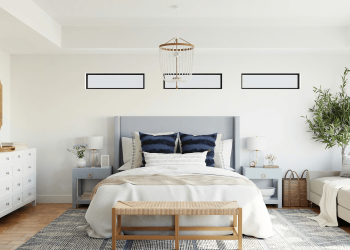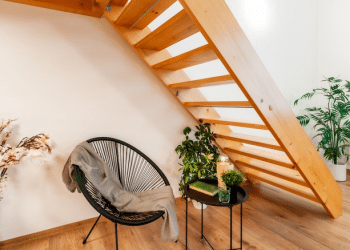Table of Contents

The higher the bed, the more comfortable it is to get up from and lie down on. However, the age, health, needs and preferences of the user must be taken into account. So which is the ideal bed height for you?
Our health changes, and even if we have an expensive and high quality bed frame, sometimes it gets to the point where we need a bed that is higher from the ground. Low beds might look great, but getting out of a bed that is too low is neither healthy nor comfortable past a certain age! Especially if you’ve already got back or joint problems. When you wake up in the morning, your body is usually stiff after the night’s rest – so don’t make things harder for yourself by trying to get up off a low level bed!
Less mobile people, those with joint problems, and the elderly need the top of the bed ideally around 55 centimetres above the ground. However the perfect bed height for you is of course totally individual, as everyone has different needs.
How do you know if you need a higher bed? Well, if you find it difficult to get up from a sitting position, or have to put too much strain on your leg muscles and knee joints. You can tell especially if you don’t have complete control over your knees when you get up.
How to test the appropriate bed height
The seat of the average chair is about 47 cm high. If getting up from chairs is not a problem, then the bed can be just a few centimetres higher.
If you’re having difficulty with chairs, test out your current bed height to see if it’s OK. Stand with your back to the bed and see where the top of the mattress reaches. If it is towards your knee socket, you will have to exert unnecessary effort when getting up. Ideally, the top of the mattress should extend to the middle of your thighs. Then you will get up with much less effort and strain, especially on your knee joints.
Mattress height matters!
A higher mattress is more expensive, but more comfortable and better for you. Almost all manufacturers on the market have increased their mattress height over the years.
Just by replacing an older 12 cm thick mattress with a 25 cm thick mattress, you gain 13 centimetres to the overall height of the bed, and this is noticeable in getting up more comfortably. In addition, the new mattress also has better orthopaedic properties – depending on the type and quality of construction.
High beds – get that posh hotel feeling
We’ve all had the experience of sleeping in a fabulous hotel bed that feels fit for a king! A good-sized double bed with a surface height of 60-62 centimetres above the ground is perfect for those who want that luxury feeling. When you’re so high up, it can feel like you’re floating! Bliss. These hotel beds typically have three layers on top of each other – the bottom spring mattress can be up to 27 centimetres high, the supporting mattress on top of that reachesis another 18-20 centimetres, and everything is then covered by a thick mattress topper. This will require an investment, but you spend so much time sleeping, it’s worth it.
Living sans-bed frame
Grumpy teenagers and unbothered bachelors with supple joints might think they don’t even need a bed frame – they’ll place a mattress directly on the floor. Whilst it might look suitably ‘boho’, this is a mistake, because the mattress can’t breathe through the underside, which is an essential requirement. Mattresses are highly susceptible to mould when they breathe, so it must lie on a breathable base which can then be placed directly on the floor. This will achieve the look of a low bed, whilst keeping your health intact.
Also test the stability of the mattress edges
Sometimes people don’t feel safe on a high bed and are afraid they will fall off. When choosing a mattress, it’s a good idea to examine the edges of the mattress. Some mattresses are reinforced and strengthened so that the edge won’t fall off even under load. When buying a mattress, it is therefore important to test the edges and see what the springs or foam will do if you lie on the edge.
Storage space under the bed
People sometimes think that the higher the bed is, the more storage space there is underneath it. However this can be counterproductive – if you stuff the space under the bed, you’ll eventually have the same ventilation problems as those who have mattresses on the floor. Try to install storage space under the bed only if totally necessary – for example if you live in a small house without enough storage space. Even then, try to minimise the amount of things you put under it.







